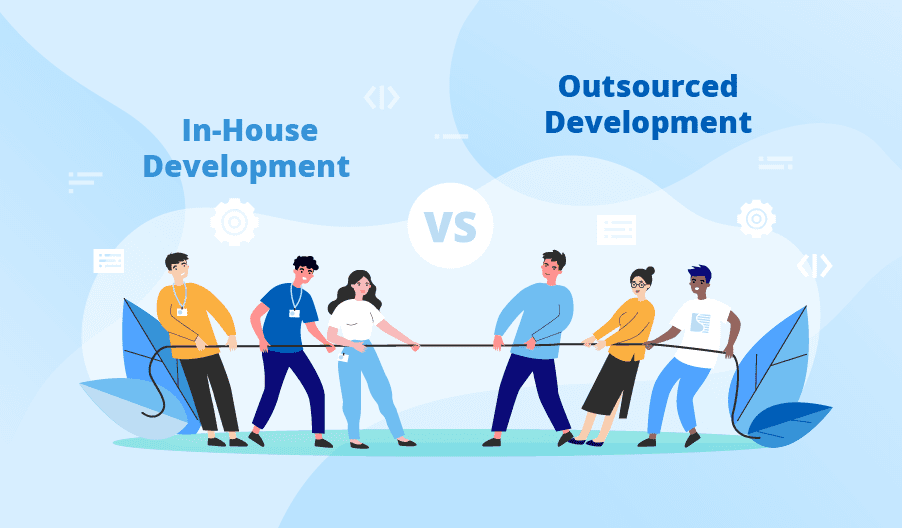Top mobile app development company in New York |In-house vs. Outsourcing Software Development: Choosing the Right Approach
In today’s fast-paced digital landscape, software development is a critical aspect of business operations for companies across all industries-Top mobile app development company in New York. Whether it’s building custom applications, developing scalable platforms, or enhancing existing software, organizations often face the decision of whether to handle these tasks in-house or outsource them to external vendors. Both approaches have their advantages and disadvantages, and choosing the right one depends on various factors such as project complexity, budget, timeline, and internal resources-mobile app development company in New York. In this article, we’ll explore the differences between in-house and outsourcing software development and provide insights to help businesses make informed decisions.
In-house Software Development
In-house software development involves forming an internal team of developers, designers, project managers, and other necessary personnel to work on software projects directly within the organization. Here are some key characteristics of in-house development:
Pros:
Greater Control and Oversight: With an in-house team, companies have direct control over the development process, allowing for better oversight and management of the project’s progress, priorities, and quality standards-best mobile application development company in New York.
Faster Communication: Communication is often more efficient within an in-house team, as team members are physically located in the same office or can easily collaborate through internal communication channels-mobile application development company in New York.
Deeper Understanding of Business Needs: In-house developers are immersed in the company’s culture, goals, and processes, which can lead to a deeper understanding of business needs and better alignment between software solutions and organizational objectives-website development company in New York.
Cons:
Higher Costs: Building and maintaining an in-house development team can be expensive, as it involves salaries, benefits, training, and infrastructure costs. Additionally, there may be downtime between projects, leading to under-utilization of resources-top mobile application development company in New York.
Limited Expertise: In-house teams may lack specialized skills or experience required for certain projects, leading to longer development times or suboptimal solutions-Top mobile app development company in Missouri USA.
Risk of Staffing Issues: Staff turnover, skill gaps, and resource constraints can pose challenges to in-house teams, affecting project continuity and quality.
Outsourcing Software Development
Outsourcing software development involves hiring external vendors or offshore development teams to handle all or part of the software development process. Here are some key characteristics of outsourcing:
Pros:
Cost Savings: Outsourcing can often be more cost-effective than maintaining an in-house team, as companies can leverage the lower labor costs in offshore locations and avoid overhead expenses associated with internal hiring and infrastructure-mobile app development company in Missouri USA.
Access to Specialized Skills: Outsourcing allows businesses to tap into a global talent pool and access specialized skills and expertise not available in-house, thereby improving the quality and efficiency of software development-best mobile application development company in Missouri USA.
Scalability and Flexibility: Outsourcing offers flexibility to scale resources up or down based on project requirements, allowing companies to adapt quickly to changing needs without the overhead of hiring or downsizing internal teams-mobile application development company in Missouri.
Cons:
Communication Challenges: Working with external teams can pose communication challenges due to differences in time zones, language barriers, and cultural differences, which may lead to misunderstandings or delays in project delivery-website development company in Missouri USA.
Lack of Control: Outsourcing requires relinquishing some degree of control over the development process to external vendors, which can be concerning for companies with strict security, compliance, or confidentiality requirements.
Quality Concerns: Without proper due diligence and oversight, there is a risk of receiving low-quality code or deliverables from outsourcing partners, leading to project delays, rework, or dissatisfaction with the end product-top mobile application development company in missouri USA.
Conclusion
In-house and outsourcing software development each have their own set of advantages and challenges, and there is no one-size-fits-all solution. The decision between the two approaches should be based on careful consideration of factors such as project complexity, budget, timeline, available resources, and strategic goals. Some companies may find that a hybrid approach, combining in-house expertise with outsourced resources for specific tasks or projects, offers the best of both worlds. Ultimately, successful software development requires clear communication, collaboration, and alignment between stakeholders, regardless of the chosen approach. By weighing the pros and cons and understanding their unique requirements, businesses can make informed decisions that drive innovation and competitiveness in today’s digital economy.
